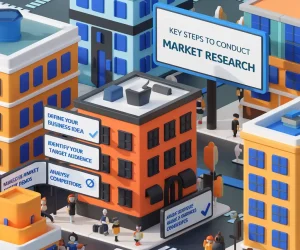Mastering Customer Satisfaction: Understanding and Measuring CSAT Scores Effectively

In today’s experience-driven market, understanding how satisfied your customers are is critical to long-term success. Whether you’re in SaaS, e-commerce, or service-based industries, having a strong grasp of your Customer Satisfaction Score (CSAT) helps you fine-tune experiences, reduce churn, and build brand loyalty.
But measuring satisfaction isn’t as straightforward as sending out a quick survey. It requires the right timing, clear questions, and consistent measurement. In this guide, we’ll define CSAT, explain how to calculate it, and explore how to use it as part of your broader customer satisfaction metrics strategy.
What Does CSAT Stand For?
CSAT stands for Customer Satisfaction Score. It’s one of the most commonly used metrics to measure how happy your customers are with a product, service, or specific interaction.
Define CSAT
CSAT is typically based on a single question, such as:
“How satisfied were you with your experience today?”
Respondents usually select from a range — for example, 1 to 5 (Very Dissatisfied to Very Satisfied).
CSAT Score Meaning and Why It Matters
The CSAT score gives you a quantifiable way to track satisfaction over time. While it doesn’t tell the whole story, it’s an excellent indicator of short-term sentiment, especially after key touchpoints like a support interaction, purchase, or onboarding experience.
What Is a Good CSAT Score?
CSAT scores are expressed as a percentage. A score above 75% is generally considered good. However, “good” can vary by industry. For example, a software company might aim for 85% or higher, while in retail, 70–80% may be more realistic.
How Do You Measure Customer Satisfaction?
There are several customer satisfaction measurement techniques, but CSAT is one of the simplest and most effective. Here’s how to go about it:
How to Calculate Customer Satisfaction Score
The CSAT formula is:
CSAT (%) = (Number of satisfied responses ÷ Total responses) × 100
If you ask customers to rate satisfaction on a scale of 1 to 5, “satisfied” typically includes responses of 4 and 5.
Example:
- Total responses: 200
- Number of 4s and 5s: 160
CSAT = (160 ÷ 200) × 100 = 80%
This is how businesses quantify customer satisfaction clearly and consistently.
How to Use CSAT Surveys Effectively
A well-designed CSAT survey is critical to gathering meaningful data. Timing is everything — you should survey customers immediately after an experience you want to measure.
Types of CSAT Survey Questions:
- “How satisfied are you with your recent support interaction?”
- “How satisfied were you with the checkout experience?”
- “How satisfied are you with the onboarding process so far?”
Using a CSAT survey template ensures your questions are clear and scalable across teams or channels. Consider including an optional open-ended follow-up like:
“What’s the main reason for your score?”
This helps you understand not just the satisfaction rate, but why customers feel the way they do.
CSAT vs. Other Customer Satisfaction Metrics
While CSAT is excellent for measuring satisfaction after specific interactions, it’s only one part of a broader customer experience strategy.
Other Common Customer Satisfaction KPIs Include:
- Net Promoter Score (NPS): Measures long-term loyalty and likelihood to recommend
- Customer Effort Score (CES): Focuses on how easy it was to complete a task
- Churn Rate & Retention: Indirect indicators of customer happiness
- Ticket Resolution Satisfaction: Tracks how happy users are with support resolutions
Together, these customer satisfaction key performance indicators give a complete view of the customer journey.
How to Track Customer Satisfaction Over Time

Tracking Customer Satisfaction (CSAT) shouldn’t be a one-off exercise. Instead, it should be embedded into your customer journey at key stages and reviewed consistently to spot patterns, successes, and red flags. Here’s how to do it effectively:
Monitor CSAT at Critical Touchpoints
Collecting feedback at strategic moments—such as after onboarding, support interactions, product updates, or renewals—helps you pinpoint exactly where satisfaction rises or dips. This targeted approach reveals much more than random, infrequent surveys.
Identify Patterns in Customer Sentiment
CSAT trends can tell powerful stories about your product or service performance. For example:
- Drop in CSAT after a product update? It might signal usability issues, feature bugs, or poor change communication.
- High satisfaction after onboarding? That suggests your welcome flow and training materials are effectively guiding users.
- Low CSAT after support tickets? This could highlight a need to upskill your agents or rethink your support process.
Use the Right Tools to Track in Real-Time
Leverage CSAT platforms or customer feedback tools integrated into your CRM (like HubSpot, Salesforce, or Zendesk). These tools allow you to monitor satisfaction scores across different user segments, product lines, or customer lifecycle stages—all in real-time.
Segment Your CSAT Data for Deeper Insights
Don’t look at your CSAT score as a single number. Break it down by user type, customer value, location, or product usage. A 4.2/5 score might look solid overall, but if your highest-value customers are only giving you a 3.0, you’ve uncovered a critical issue.
Automate Reporting and Alerts
Set up automated alerts when satisfaction scores drop below a certain threshold, especially in high-risk areas like post-support or pre-renewal stages. This lets you take immediate action and potentially retain at-risk customers.
How to Gauge or Quantify Customer Satisfaction Accurately
Measuring satisfaction isn’t just about numbers. You need to combine quantitative and qualitative data to get the full picture.
Effectively measuring customer satisfaction isn’t just about sending out a survey—it requires a thoughtful combination of timing, clarity, and contextual data. Here are some proven techniques to accurately gauge how your customers truly feel:
Deploy Short, Relevant Surveys at Key Moments
Don’t wait too long after an interaction to ask for feedback. Send CSAT surveys immediately after meaningful touchpoints—such as after a support ticket is closed, a product is delivered, or a service call ends. This ensures responses are fresh and reflective of the real experience, not blurred by time.
Ask Clear and Focused Questions
Keep your survey questions simple, direct, and limited to the specific experience. A single, well-phrased question like “How satisfied were you with the support you received today?” will often yield more reliable insights than a long list of vague or broad questions. Avoid jargon or technical language that could confuse the respondent.
Analyse Trends, Not Just Individual Responses
One bad score doesn’t tell the full story. Instead, look at overall patterns: Are satisfaction scores declining over time? Do specific teams, product areas, or service regions consistently underperform? Identifying trends allows you to uncover systemic issues before they escalate.
Enrich CSAT Data with Behavioural Insights
Survey results alone can be misleading. Pair your CSAT scores with usage data—such as login frequency, support ticket volume, churn rate, time-on-page, or feature adoption. For example, if users rate your service highly but stop using it a week later, that’s a red flag worth investigating.
Hold Regular Cross-Functional Review Sessions
Satisfaction data shouldn’t sit idle in a dashboard. Schedule regular meetings with marketing, customer success, product, and support teams to review survey insights together. Discuss what’s working, what’s not, and what action steps are needed. These collaborative reviews often surface root causes and actionable improvements.
Close the Feedback Loop
Whenever possible, follow up with customers who left neutral or negative feedback. A quick personalised response—acknowledging their concerns and explaining how you plan to address them—can go a long way in rebuilding trust and improving future scores.








